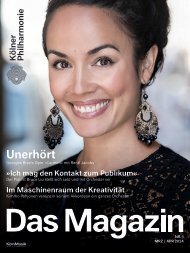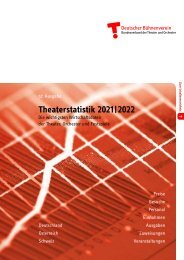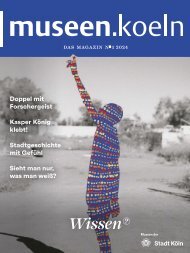Malteser International Annual Report_E
- No tags were found...
You also want an ePaper? Increase the reach of your titles
YUMPU automatically turns print PDFs into web optimized ePapers that Google loves.
eferral mechanism has helped prevent life-threatening<br />
situations and saved the lives of countless women and<br />
children.<br />
Traditional birth attendants continue to play an<br />
important role in childbirth. We also train them to give<br />
the necessary supervision, care, and advice to women<br />
during pregnancy, labor, and the postpartum period.<br />
These Trained TBAs (TTBA) are also able to use our<br />
“Clean Delivery Kits”, which contain essential materials<br />
to ensure a safe delivery in cases of emergency. Regular<br />
meetings bring together all those engaged in community<br />
health to discuss the current state of affairs and build<br />
synergies. We are also installing water points and supporting<br />
households in the construction of latrines. “By<br />
providing clean water and sanitation, we can make a<br />
significant contribution to improving health and quality<br />
of life,” explains Paech.<br />
Active participation and functioning networks<br />
From the very beginning, it was particularly important<br />
for us to create a sustainable knowledge sharing culture<br />
within the communities. “We have always seen the people<br />
we serve as experts of their lives. We make sure to<br />
proactively listen to their perspectives and support them<br />
to make decisions about what they need to improve<br />
their lives,” says Paech.<br />
The increased awareness of community health issues<br />
and active participation lead to a strengthened healthcare<br />
system at the village and township level, with both<br />
levels complementing each other and functioning in a<br />
network.<br />
In this process, we ensure that existing cultural<br />
structures are not undermined. Traditional birth attendants<br />
(TBAs) continue to retain their role as important<br />
confidants for pregnant women and young mothers.<br />
This time, however, they are better trained to support<br />
public auxiliary midwives who are responsible for maternal<br />
and infant health in the villages.<br />
“In Kayin State, our strategy of community participation<br />
has enabled people to play an active role in shaping our<br />
healthcare programs and their future,” says Dr. Khine Ei<br />
Ei Hein, Project Manager in Kayin State. Our activities<br />
Improving health in Myanmar‘s rural communities<br />
Our Goals Strengthening medical care infrastructure and community-based health networks<br />
2018: as well as ensuring access to drinking water and sanitation for rural communities.<br />
Our achievement:<br />
Donors:<br />
Partners:<br />
Medical care for 25,801 people in our health facilities. Construction of ten new<br />
health centers and rehabilitation of two existing ones. Access to clean water for<br />
25,319 people.<br />
German Federal Foreign Office, Federal Ministry for Economic Cooperation and<br />
Development (BMZ), Deutsche Gesellschaft für internationale Zusammenarbeit (GIZ),<br />
Global Fund, UNICEF<br />
Local health authorities and municipalities<br />
in the region have demonstrably had positive impact.<br />
In 2018, 32 percent of surveyed mothers attended the<br />
recommended two ante-natal and one post-natal care<br />
sessions, compared to 15.7 percent in 2014. Also, 25<br />
percent of women had trained health personnel attend<br />
their deliveries in 2018, when the project started in<br />
2014, the figure stood at a mere 7.3 percent.<br />
“These findings have strengthened our commitment,”<br />
says Paech. “Reaching the economic, environmental<br />
and social goals of Agenda 2030 depends on having<br />
a thriving and healthy human population. Together<br />
with our partners, we want to continue to advance these<br />
positive developments in the coming years in order to<br />
sustainably improve the lives of people in rural and<br />
remote areas of Myanmar.”<br />
Reducing maternal and neonatal mortality rates by 2030<br />
Spain<br />
(Population: 46 million)<br />
Myanmar<br />
(Population: 52 million)<br />
Agenda 2030<br />
Target<br />
Neonatal mortality<br />
rate in 2015<br />
Maternal mortality<br />
ratio in 2015<br />
786<br />
(1.9 per 1,000<br />
live births)<br />
21<br />
(5 per 100,000<br />
live births)<br />
23,869<br />
(25.3 per 1,000<br />
live births)<br />
1,700<br />
(178 pper 100,000<br />
live births)<br />
12<br />
per 1,000 live births per<br />
year across all countries<br />
70<br />
per 100,000 live births<br />
per year<br />
A comparison between<br />
Spain and Myanmar<br />
highlights global<br />
disparities in maternal<br />
and neonatal mortality<br />
rates.<br />
SOURCE: UNICEF<br />
25


















